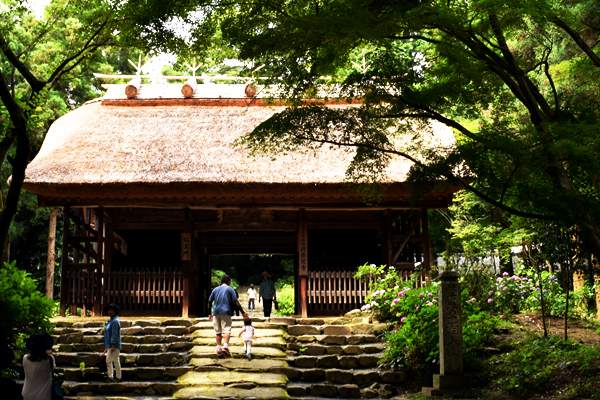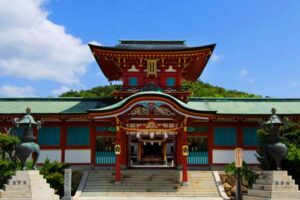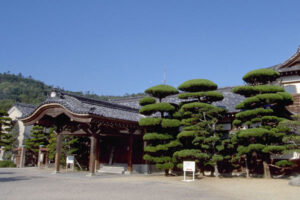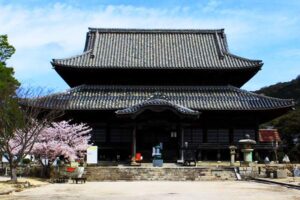A pure mind in a pure body
Amidaji Temple Origins
A pure mind in a pure body
The origins of Amidaji Temple are intricately entwined with Todaiji Temple in Nara. Founded in the eighth century, and long the most important Buddhist institution in Japan, Todaiji was destroyed in 1180 during a clan war. Rebuilding proceeded rapidly, and the Great Buddha statue was fully restored by 1185. Reconstructing the hall that housed the statue demanded a vast amount of timber, so Emperor Go-Shirakawa (1127–1192) sent Shunjobo Chogen (1121–1206), the monk in charge of rebuilding work, to Yamaguchi to cut down and ship back 130 enormous trees.
Chogen arrived in Yamaguchi in 1186 and established Amidaji as a branch temple of Todaiji in the following year. The temple’s role is to pray for the health and well-being of the emperor. Chogen had visited China to study Buddhism, and Amidaji reflects the religious innovations he encountered there. Both the Amida Nyorai—the main deity in Pure Land Buddhism after whom the temple is named—and yokuto nenbutsu—bathing as a form of self-purification—are imports from China. The complex consists of seven buildings (two of which are for bathing) set in a mountainside garden full of hydrangeas and is home to several National Treasures.

Photo:Amidaji Hondou

Photo:Ishiburo
Cast Iron Treasure Pagoda
A reliquary and a record
More than three meters high and 820 kilograms in weight, this massive treasure pagoda (tetsuhoto) dates from 1197. Inside the pagoda is a small crystal five-ringed tower (gorinto), with the rings symbolizing Earth, Water, Fire, Wind, and Air in ascending order. The tower contains relics of the Buddha brought back from China by Chogen (1121–1206), the founder of Amidaji Temple—along with the entire practice of worshipping such relics, known as shari-shinko. The pagoda itself is the work of Japanese artisans who learned how to cast metal from Chen Heqing, a Chinese craftsman active in Japan.
The podium features relief inscriptions on all four sides. The single large Sanskrit character in the center indicates a point of the compass. Meanwhile, the Japanese script provides a detailed record of why and when Amidaji was built, also listing the temple’s location, the seven buildings that make it up, key equipment (such as the cauldron to heat the bathwater), a prayer for the well-being of the emperor, and the names of Chogen and important government officials.
This is the oldest treasure pagoda in Japan. Because it displays an extraordinary level of craftsmanship and provides an important account of Amidaji’s history, it was designated a National Treasure in 1954.
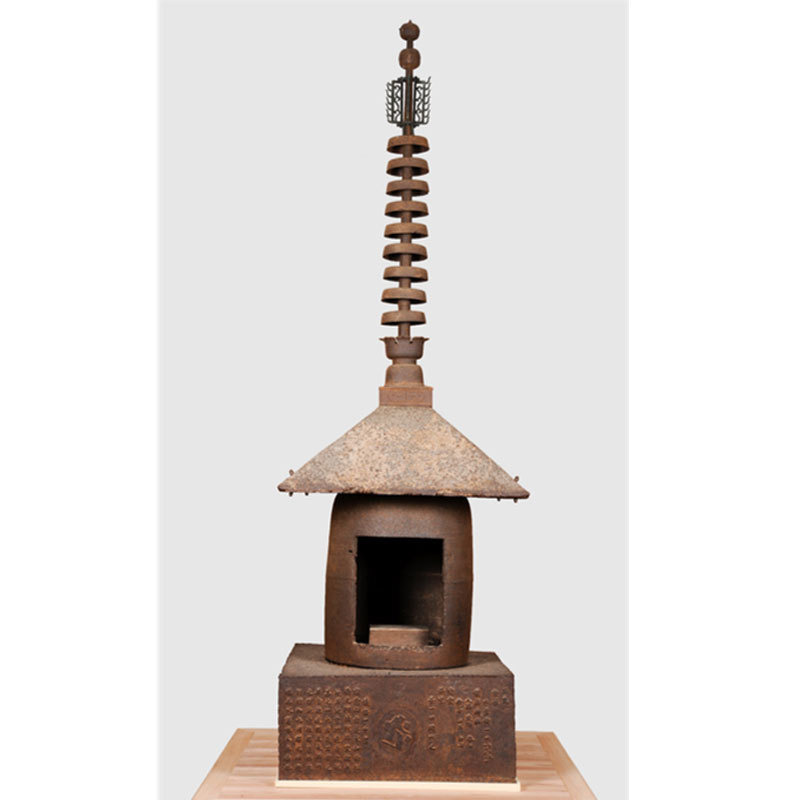
photo:Cast Iron Treasure Pagoda
Amidaji Temple Hydrangea festival
Life lessons from flowers
In Japan, hydrangeas, or ajisai, are intimately associated with the June rainy season. Because they change color according to the acidity of the soil, they have another name: shichihenge, or “flowers that change color seven times.” This has made them into a symbol of mutability: they teach us that everything in life is uncertain and that we should value each and every day given to us.
Amidaji Temple has been holding an annual hydrangea festival every June since 1991. The temple grounds are now planted with around 4,000 hydrangea plants from eighty different varieties. It takes between thirty minutes to an hour to walk the designated route through the grounds. If you cannot make it in June, the grounds are also beautiful in November when the leaves turn.
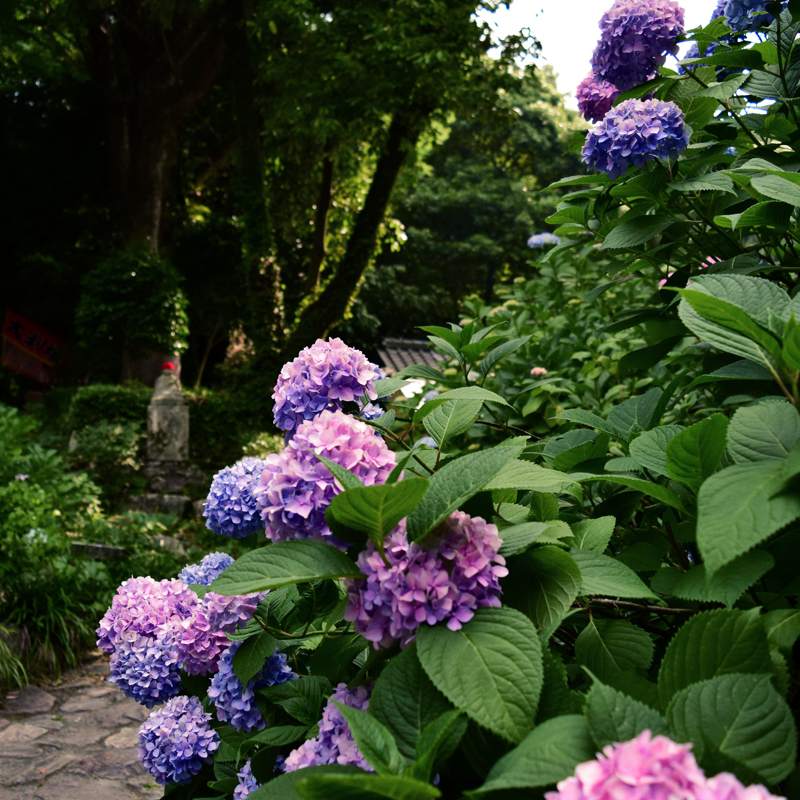
Photo:Hydrangea
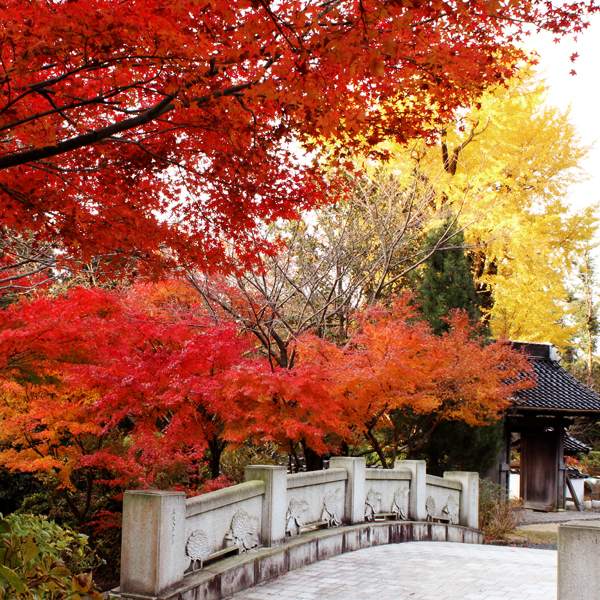
Photo:November when the leaves turn
Nio-mon, Kongorikishi
Nio-mon: An ancient gate
This Edo-period (1603–1867) gate with its thatched roof is the oldest building in the entire Amidaji Temple complex. It was built in 1685 by Mohri Narinobu, the local daimyo, to replace the original thirteenth-century gate that had collapsed more than a century earlier. The present gate has the same design and dimensions as its predecessor. The gate gets its name from the Nio—literally two kings, the pair of muscular, fear-inspiring guardians who stand on either side of it. (Interestingly, the thatch on the roof has to be replaced every twenty-five years on the south side of the gate, but every ten to fifteen years on the north side, where it gets less sunlight and stays damp longer.)
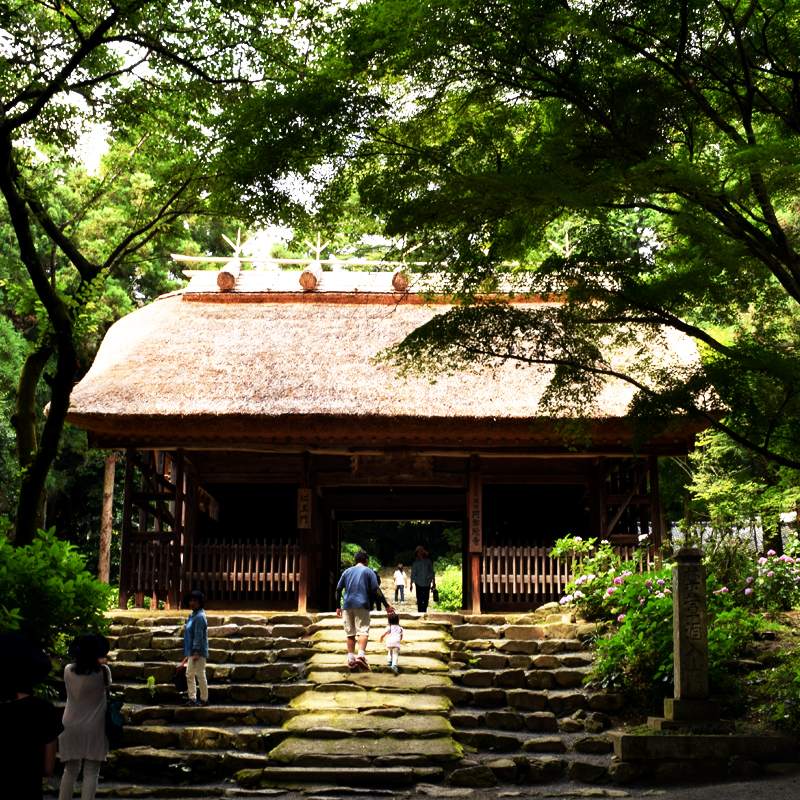
Photo:Nio-mon
Kongo Rikishi: Two Terrifying Guardians
Referred to either as Nio (two kings) or as Kongo Rikishi (mighty wrestlers), these figures are often found standing guard at temple gates. Traditionally, the statue on the right has his mouth open making an “a” sound, while the one on the left has his mouth closed to make an “um” sound. Like alpha and omega in Christianity, this combination connotes balance and completeness. Traces of vermilion paint show where the wood blocks that make up the statues are joined. The craftsmanship is extraordinary. The dynamic details—the popping veins, heaving rib cages, and swirling robes—are typical of Kaikei, the sculptor who created them. Weighing 340 kilograms, and 2.7 meters (right) and 2.75 meters (left) tall, the statues date from the early Kamakura period (1185–1333). Imposing though they are, they are modest in comparison to the similar guardians Kaikei made for Todaiji Temple in Nara, which are over eight meters in height.

photo:Kongo Rikishi
翻訳について
このサイトの解説文は観光庁の地域観光資源の多言語解説整備事業で作成しました。
Official Site
Information
◆Name of the historical building
Amidaji Temple
◆Address
1869 Mure,Hofu City,Yamaguchi Prefecture
◆Phone number
0835-38-0839
◆Traffic access
Take Bocho Bus at North Exit of Hofu Station board for Amidaji and get off at Amidaji bus stop.
It takes about 20 minutes.
◆Parking areas
Available
◆Treasure Museum Opening hours
9:00a.m. ~ 17:00 p.m. (Reservation required)
◆Admission fee
Adult: \400
Junior high and high school students: \200
